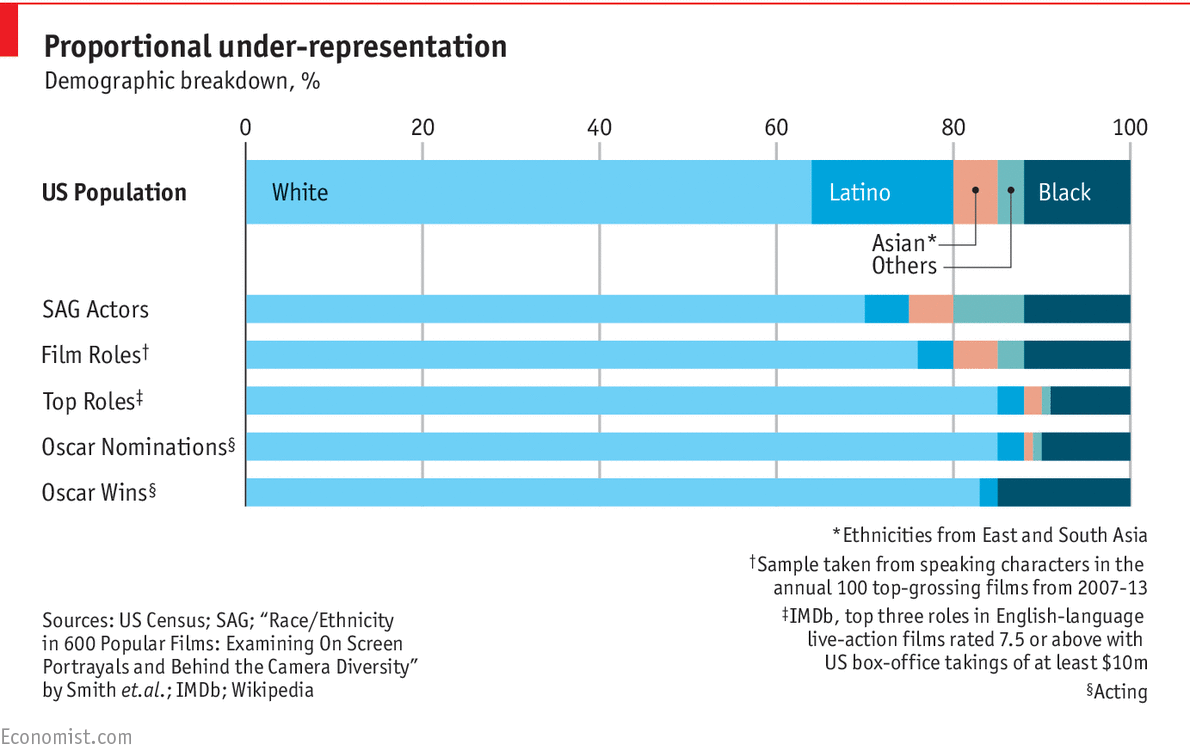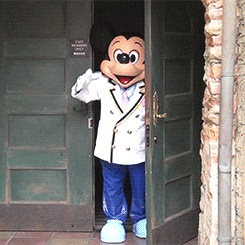
This past week on Facebook I have come across a couple articles and videos that undermined many of the social movements people are currently fighting with and completely missed the boat on the real message of these movements. One thing that frustrates people in a social movement is their allies. Allies in these cases are people who are not directly affected by the problem at hand, but still care dearly about equality and progress within the society. These allies are directed to act with the movement, (join rallies, walk in marches, yell in chants, etc.) but understand that they are not and possibly will never be affected by whatever it is being challenged. Often times, people are quick to come to this realization and continue fighting as allies, but a very large percent of the time these allies ask, “why are you excluding me?” when it is almost never the case.
Last night, I read an article in which Sri Lankan rapper M.I.A. attacks Kendrick Lamar and Beyoncé for their stance on Black Lives Matter. She says,
“Is Beyoncé or Kendrick Lamar going to say Muslim Lives Matter? Or Syrian Lives Matter? Or this kid in Pakistan matters? That’s a more interesting question. And you cannot ask it on a song that’s on Apple, you cannot ask it on an American TV program, you cannot create that tag on Twitter, Michelle Obama is not going to hump you back.”
M.I.A., who routinely advocates for the safety of refugees in her music calls out the artists because they are not pioneering any movement. She continues,
“It’s interesting that in America the problem you’re allowed to talk about is Black Lives Matter. It’s not a new thing to me — it’s what Lauryn Hill was saying in the 1990s, or Public Enemy in the 1980s.
Yes, it is very true that artists were talking about the same things decades ago, but it shows the severity and longevity of this problem. Lauryn Hill 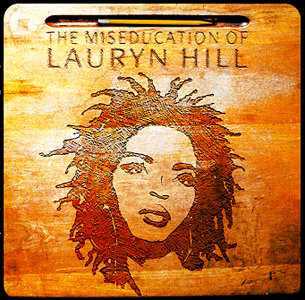 was critically acclaimed for her only solo album, The Miseducation of Lauryn Hill, but it did little to impact the current state of the black community because white America did not want it to. While she speaks nothing but facts (I strongly urge you to listen to it, it’s simply amazing) society gave her a pat on the back and continued on with their lives. No one outside of our movement took the work as seriously as it was. Also, since when were we “allowed” to even talk about this? Every time we spoke up about injustices we were torn right back down. From the Civil Rights Movement to the MOVE bombings in Philadelphia, to Kendrick Lamar’s Grammy snub, to Beyoncé’s Formation backlash, we have never been “allowed” to talk about any of this.
was critically acclaimed for her only solo album, The Miseducation of Lauryn Hill, but it did little to impact the current state of the black community because white America did not want it to. While she speaks nothing but facts (I strongly urge you to listen to it, it’s simply amazing) society gave her a pat on the back and continued on with their lives. No one outside of our movement took the work as seriously as it was. Also, since when were we “allowed” to even talk about this? Every time we spoke up about injustices we were torn right back down. From the Civil Rights Movement to the MOVE bombings in Philadelphia, to Kendrick Lamar’s Grammy snub, to Beyoncé’s Formation backlash, we have never been “allowed” to talk about any of this.
M.I.A. is doing exactly what white America has done with All Lives Matter and Blue Lives Matter, trends that were conceived in pure retaliation to the original movement. She is taking the trend as an exclusionary movement and taking offense. Instead of being an ally, which she has done many times before, she is undermining the progress trying to be made and is diverting attention away from the movement. No one has ever said that Syrian and Muslim lives don’t matter, but we are trying to focus one movement on one problem. When people speak about how bad Muslims are to the country, I guarantee that most of us are denouncing those individual’s comments! We stand as allies of the Muslim community and will speak up when need be, but when we are speaking under the Black Lives Matter organization, we are speaking about black lives.
The other thing that upset me was a video on feminism.
Her first argument is that if feminism was a movement for equality why don’t we see men’s issues being represented? Simple, because it’s a movement for women’s equality. It is meant to elevate women to the tier men are on, not drag down men to meet them halfway. She says men are raped more in U.S. prisons than women. Well 1. men are much more violent than women and are much more likely to carry out violent crime, including rape, than women are. 2. If men are already more likely to commit violent crime, and most of these men clearly have or else they wouldn’t be in jail, then they would do it again, right? 3. They’re separated by gender so if a violent criminal is looking to commit a violent crime again, it would HAVE to be with a male, right? Cool. Next.
Her second argument is that almost half of the domestic abuse victims in the U.S. and Canada are men. I believe that 100%! Yes, women are just as likely to hit their men as vice versa, but women are much less likely to cause significant harm. Let’s face it, women are generally weaker than men, so if a woman slaps her man, that very well could be it. Whereas if a man punches his wife, she could be down for the count. This is why there are safe houses for women, because they are much more often to be in legitimate danger than men are. Of course there are still cases of severe abuse against men, but it is not nearly as often. Next.
Men are 77% of homicide victims. Very true, but that brings be back to my previous point of men being more likely to commit violent crime. Believe it or not, there is still a sense of chivalry in the criminal community. Women are still protected by men and for this reason are less likely to be victims of violent crime at the hands of a man. Here’s a scenario, a man or woman can get robbed, but it takes much more effort to overpower a man and in this struggle it can lead to more crimes. They can get into an altercation, should the male victim refuse, and could eventually get killed. Yes, this may be an extreme case, but it nonetheless happens.
Before this post becomes a novel, I am going to end it with this: Being an ally is fighting with the people for the people their advocating, not bringing in the “other”. The Black Lives Matter movement is meant to uplift the black community, as the feminist movement is meant to uplift women. The other side of both movements clearly has it better than these minorities otherwise these movements would not exist. To be an ally is to recognize that you are the “other” in these movements and assist them in their progress. It is not up to you to dictate their rhetoric or their stance. It is up to you to represent the other and show that you stand in solidarity to these movements. In all actuality, these allies are often there to give the campaign legitimacy. If no other recognized the inequality in these minority groups, it would be easy to dismiss, but because there are people who have ripped off their blinders and recognize the disorganization in our society, we must come face to face with these movements and try to change our environment.


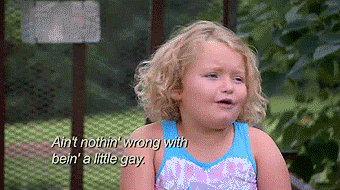
 The men embrace their feminine sides, while the women flaunt their masculine sides. They do not conform to the roles based on their gender identity, but rather use both roles interchangeably to express every aspect of themselves. Now for some reason, society has such an issue with this and is so sensitive when it comes to this idea. Why aren’t men allowed to show emotion? Why aren’t women allowed to be dominant? Why are women viewed as a “bitch” when they voice their desires and opinions? Why are gay couples always asked, “So, who’s the man in the relationship?” These are questions that the LGBTQ community is not afraid to address and defy. They let people be who they are and try to expand the binary system that is currently in place.
The men embrace their feminine sides, while the women flaunt their masculine sides. They do not conform to the roles based on their gender identity, but rather use both roles interchangeably to express every aspect of themselves. Now for some reason, society has such an issue with this and is so sensitive when it comes to this idea. Why aren’t men allowed to show emotion? Why aren’t women allowed to be dominant? Why are women viewed as a “bitch” when they voice their desires and opinions? Why are gay couples always asked, “So, who’s the man in the relationship?” These are questions that the LGBTQ community is not afraid to address and defy. They let people be who they are and try to expand the binary system that is currently in place.



 After maybe thirty minutes of waiting outside the door, a large group of us went downstairs (next door to us now, actually) and watched the live stream on the computer.
After maybe thirty minutes of waiting outside the door, a large group of us went downstairs (next door to us now, actually) and watched the live stream on the computer. white privilege is literally being able to get up there and say that with a straight face. It’s being able to live in a world where you don’t see the effects that society has on every minority, whether it be of race, gender, or sexuality. It’s having been able to go through life and not experience any wrongdoing or unjust treatment. It’s being able to actually take advantage of the “innocent until proven guilty” mantra America loves to live off. We see it every day when we see how minorities are portrayed in the media. It’s prevalent in the workforce when a white candidate is 16% more likely to be called back for an interview than a black candidate.
white privilege is literally being able to get up there and say that with a straight face. It’s being able to live in a world where you don’t see the effects that society has on every minority, whether it be of race, gender, or sexuality. It’s having been able to go through life and not experience any wrongdoing or unjust treatment. It’s being able to actually take advantage of the “innocent until proven guilty” mantra America loves to live off. We see it every day when we see how minorities are portrayed in the media. It’s prevalent in the workforce when a white candidate is 16% more likely to be called back for an interview than a black candidate. 

 These stories pull on the emotional strings by showing pictures of the destruction, the grieving families, the bloodied rooms, the children screaming and running, and the utter chaos that is resultant of these actions. This chaos and hysteria is what future killers search for. The way that these events are stamped into our minds, not to be erased for decades to come, is what future killers characterize as uplifting and immortalizing. The way the pictures of terrified citizens are forever etched into our memory is what future killers see as their path to fame.
These stories pull on the emotional strings by showing pictures of the destruction, the grieving families, the bloodied rooms, the children screaming and running, and the utter chaos that is resultant of these actions. This chaos and hysteria is what future killers search for. The way that these events are stamped into our minds, not to be erased for decades to come, is what future killers characterize as uplifting and immortalizing. The way the pictures of terrified citizens are forever etched into our memory is what future killers see as their path to fame. d cast out by society for whatever reason. It is those who have been turned down by their dream prom date. It is those who have been called weird and were made to sit at lunch tables alone. It is those who think that the whole world is against them and cannot fathom that the only opinion that really matters is their own. These people internalize all the typical teenage bullying they experience and release it in massive fits of anger, revenge, and what they view as power.
d cast out by society for whatever reason. It is those who have been turned down by their dream prom date. It is those who have been called weird and were made to sit at lunch tables alone. It is those who think that the whole world is against them and cannot fathom that the only opinion that really matters is their own. These people internalize all the typical teenage bullying they experience and release it in massive fits of anger, revenge, and what they view as power.

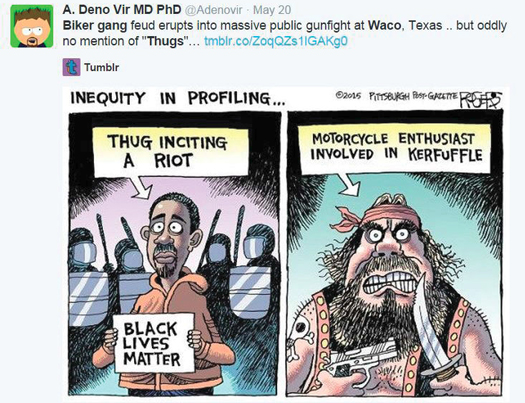

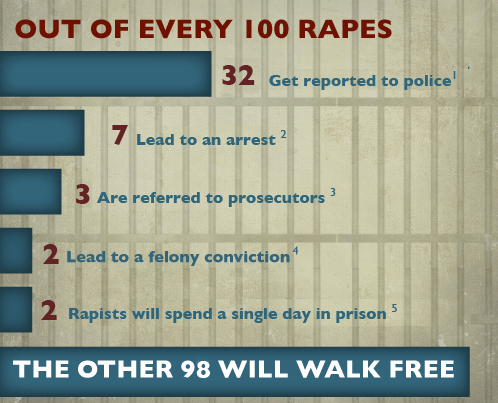 Rape culture has clearly been a problem in the United States as many people either do not want to recognize the violence going on in society or are simply too uncomfortable to talk about the topic. This creates an atmosphere where people are not being educated on the topic, victims are not being taken seriously or are blamed, or victims are too afraid to speak about what happened to them. Throughout this post you will see me refer to people who were raped as victims pretty often because I want to stray away from the use of “women” because clearly men can get raped as well. Unfortunately the vast majority are women, but I do not want to marginalize or make them feel anymore uncomfortable than they may already feel. (However, basic human error may cause me to say women so… sorry ahead of time if I just type it.)
Rape culture has clearly been a problem in the United States as many people either do not want to recognize the violence going on in society or are simply too uncomfortable to talk about the topic. This creates an atmosphere where people are not being educated on the topic, victims are not being taken seriously or are blamed, or victims are too afraid to speak about what happened to them. Throughout this post you will see me refer to people who were raped as victims pretty often because I want to stray away from the use of “women” because clearly men can get raped as well. Unfortunately the vast majority are women, but I do not want to marginalize or make them feel anymore uncomfortable than they may already feel. (However, basic human error may cause me to say women so… sorry ahead of time if I just type it.) This poor girl has been forced to continually be contractually bounded to her accused rapist with no opportunity to work with other producers and release new music. It has not been proven that her producer, Lukasz Sebastian “Dr. Luke” Gottwald, has actually raped her, and ironically enough that is not even up for trial at this moment, but she has cited years of emotional, verbal, physical, and sexual abuse as the basis of her request to void her contract. In October 2014, Kesha filed a lawsuit against Dr. Luke asking to void her contract with the producer. She asked to be allowed to work with other labels and receive damages. Sounds simple, right? Then, days later, Dr. Luke countersued Kesha for defamation and breach of contract. Kesha’s original lawsuit was transferred in June to the New York Supreme Court due to a contract stipulation that required any and all cases to be resolved in New York. Finally after a year of the lawsuit waiting to be heard, the court finally held hearings and came to a decision: the judge will not “decimate a contract that was heavily negotiated.” Adding that she was already free to make music with other producers and release music under Sony.
This poor girl has been forced to continually be contractually bounded to her accused rapist with no opportunity to work with other producers and release new music. It has not been proven that her producer, Lukasz Sebastian “Dr. Luke” Gottwald, has actually raped her, and ironically enough that is not even up for trial at this moment, but she has cited years of emotional, verbal, physical, and sexual abuse as the basis of her request to void her contract. In October 2014, Kesha filed a lawsuit against Dr. Luke asking to void her contract with the producer. She asked to be allowed to work with other labels and receive damages. Sounds simple, right? Then, days later, Dr. Luke countersued Kesha for defamation and breach of contract. Kesha’s original lawsuit was transferred in June to the New York Supreme Court due to a contract stipulation that required any and all cases to be resolved in New York. Finally after a year of the lawsuit waiting to be heard, the court finally held hearings and came to a decision: the judge will not “decimate a contract that was heavily negotiated.” Adding that she was already free to make music with other producers and release music under Sony.
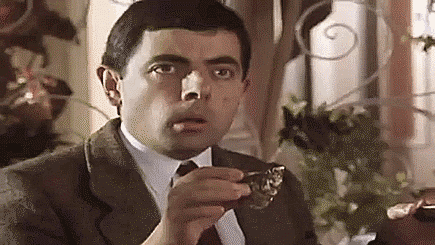

 We then see the officers raise their hands in the signature “hands up, don’t shoot” gesture while the phrase “stop shooting us” flashes across the screen. While comparatively subtle, this video is the most political piece of work she has ever released and at no greater of a time. Still at the height of our new era Civil Rights Movement, the beginning of the year, before she’s set to take the biggest stage in America, and ahead of her upcoming sixth album, Beyoncé timed this piece to not only get people talking about her album, but to get people talking about race and the inequalities many of us may face.
We then see the officers raise their hands in the signature “hands up, don’t shoot” gesture while the phrase “stop shooting us” flashes across the screen. While comparatively subtle, this video is the most political piece of work she has ever released and at no greater of a time. Still at the height of our new era Civil Rights Movement, the beginning of the year, before she’s set to take the biggest stage in America, and ahead of her upcoming sixth album, Beyoncé timed this piece to not only get people talking about her album, but to get people talking about race and the inequalities many of us may face.

 Now, this is not all to say that not one Black Panther supported black supremacy, as I’m sure few did- there’s always radicals in every political group. But as a whole, the picture the white media paints is one that is completely skewed and twisted to create the narrative they want to live on forever.
Now, this is not all to say that not one Black Panther supported black supremacy, as I’m sure few did- there’s always radicals in every political group. But as a whole, the picture the white media paints is one that is completely skewed and twisted to create the narrative they want to live on forever.

 Take a look at the picture to the right. Half of these women won their awards for portraying characters that lived during an era of white supremacy and are shown to be second class citizens compared to their white colleagues. Two of them portray, to some extent, the black stereotype of the “Sapphire” in their movies. Three portray the infamous character, the “Mammy” in their movies. One won her Oscar over an extremely controversial and offensive role in which she perpetuates the “Jezebel” stereotype. Of the seven black women who have won Oscars in the acting categories, five were for roles that uplifted the idea of white supremacy and black subjugation (I do not really have anything to say about Whoopi Goldberg’s win, and Jennifer Hudson won Best Supporting Actress for her role as Effie White in Dreamgirls, which still took place in the very racist 1960s America).
Take a look at the picture to the right. Half of these women won their awards for portraying characters that lived during an era of white supremacy and are shown to be second class citizens compared to their white colleagues. Two of them portray, to some extent, the black stereotype of the “Sapphire” in their movies. Three portray the infamous character, the “Mammy” in their movies. One won her Oscar over an extremely controversial and offensive role in which she perpetuates the “Jezebel” stereotype. Of the seven black women who have won Oscars in the acting categories, five were for roles that uplifted the idea of white supremacy and black subjugation (I do not really have anything to say about Whoopi Goldberg’s win, and Jennifer Hudson won Best Supporting Actress for her role as Effie White in Dreamgirls, which still took place in the very racist 1960s America).


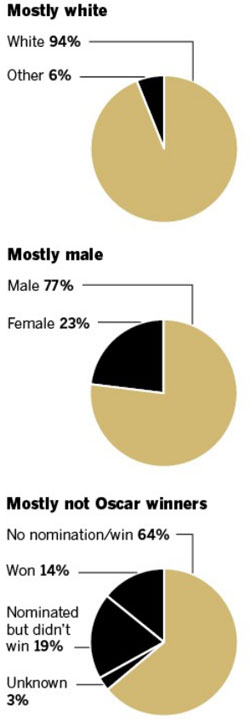 Academy Awards have recently come under fire for their lack of diversity in their Oscar nominations. Each year the Academy nominates five actors for Best Actor, Best Actress, Best Supporting Actor, and Best Supporting Actress, that’s 20 spots for people to be nominated. In the past two years ALL forty spots have been filled by white actors and actresses. People have called out the Academy for not only excluding people of color from the nominations, but for lacking diversity in their own institution. As you can see the Academy, who nominates and votes for winners, are predominantly white males (and not even nominees oddly???). People think that due to the lack of diversity in the voting block, movies featuring actors of color are often overlooked and not recognized as they should be. This has lead to a lot of talk about who should be voting for these categories and if they accurately reflect a reasonable distribution of race and sex, which ideally would lead to more diverse nominations.
Academy Awards have recently come under fire for their lack of diversity in their Oscar nominations. Each year the Academy nominates five actors for Best Actor, Best Actress, Best Supporting Actor, and Best Supporting Actress, that’s 20 spots for people to be nominated. In the past two years ALL forty spots have been filled by white actors and actresses. People have called out the Academy for not only excluding people of color from the nominations, but for lacking diversity in their own institution. As you can see the Academy, who nominates and votes for winners, are predominantly white males (and not even nominees oddly???). People think that due to the lack of diversity in the voting block, movies featuring actors of color are often overlooked and not recognized as they should be. This has lead to a lot of talk about who should be voting for these categories and if they accurately reflect a reasonable distribution of race and sex, which ideally would lead to more diverse nominations.